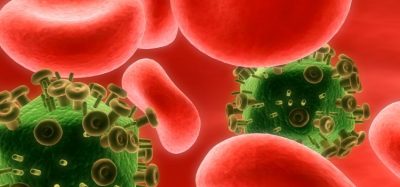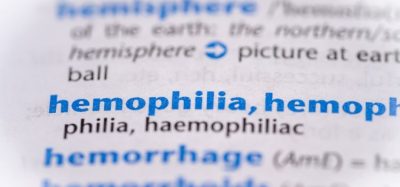Double-blind clinical trials fail to capture how personal behaviours influence treatment
Posted: 11 June 2015 |
Trials fail to measure how a drug’s performance can vary based on patient behaviour, especially if patients change habits in anticipation of treatment…


Double-blind clinical trials for new drugs are considered the “gold standard” of medical research because they’re designed to determine the efficacy of a treatment free from doctor and participant bias.


But one effect these trials fail to measure is how a medication’s performance can vary based on patients’ lifestyle choices, especially if patients change their habits because they are anticipating treatment, according to a new study.
A recent meta-analysis of six clinical trials, led by researchers from Princeton University, the California Institute of Technology and Cambridge University, shows that people who felt confident that they received the drug changed their behaviours in ways that not only improved their health outcomes but also made the drug itself more effective. They also were less likely to bow out of a clinical trial.
Researchers propose a new trial design that measures interactions between behaviour and treatment
The researchers propose a new trial design – which they call a two-by-two blind trial – that can measure such interactions between behaviour and treatment. Unlike current double-blind clinical trials, the new model works by randomising not only the treatment status of patients but also the probability with which they receive treatment. This helps determine how behavioural changes, such as changes in diet and exercise, influence treatment outcomes.
“Our proposed design has the potential to better evaluate the effectiveness of treatments targeting conditions related to mental health, substance abuse and smoking cessation, in which behaviour is known to play an important role,” said co-lead author Sylvain Chassang.
In current double-blind randomised controlled trials, participants are either placed in a treatment group, in which they try out a new drug, or they remain in the control group and keep their current medications. Participants do not know which group they are in, but before the trial begins, all participants are told the odds of their being placed in either the treatment or control group (a 50/50 percent chance in most cases).
But not all patients behave the same during a trial, and behaviour might affect the overall effectiveness of a particular drug. This is what led Chassang and his collaborators – Erik Snowberg, Ben Seymour and Caley Bowles – to study whether the likelihood of receiving a new treatment changes the overall effectiveness of a drug.
The researchers propose a new clinical trial design that varies the probability of treatment across participant groups. Instead of having a 50/50 chance of receiving treatment, participants are placed in high- and low-probability treatment groups. In the high-probability group, there is a 70% chance of receiving treatment while the low-probability group would have only a 30% chance of receiving treatment. Following current guidelines, all participants are made aware of their likelihood of receiving the new treatment.
Likelihood of treatment has an impact on behaviour
“Likelihood of treatment has an important impact on behaviour,” Chassang said. “If my odds of being treated are low, then my incentives to try and change my behaviour are also low. If my odds of being treated are higher, then my incentives to change my behaviour are also higher. We wanted to measure how these behaviours played a role in the overall effectiveness of a drug.”
“It’s a very small change to the design of the trial, but it’s important,” Snowberg said. “The effect of a treatment has these two constituent parts: pure treatment effect and the treatment-behaviour interaction. Standard blind trials just randomise the likelihood of treatment, but if you want to separate out the pure treatment effects and the treatment-behaviour interaction effect, then you have to randomise both the treatment and the behaviour.”
To test their hypothesis, the researchers conducted a meta-analysis of data from six clinical trials involving two antidepressants, paroxetine and tricyclic imipramine. By changing the variation in the likelihood of treatment across trials, they were able to determine how much of the overall effect is attributable to behaviour change alone, the treatment alone and the interaction between the treatment and behaviour.
First, the researchers evaluated whether participants behaved differently based on whether they had a high or low probability of receiving the treatment. They found that in trials where participants had a high probability of treatment, around 70%, the dropout rate was significantly lower than in trials with participants who had a lower probability of treatment, around 50%.
The effectiveness of paroxetine treatment increased with the likelihood of being treated
They then evaluated how behaviour affected treatment outcomes. In the case of paroxetine, they found that the effectiveness of treatment increased with the likelihood of being treated. This change could be interpreted as an interaction effect between drugs and changes in behaviour. While specific patient behaviours were not directly observable, the analysis shows that participants who feel confident about receiving treatment change their behaviour in a way that makes the drug more effective.
Chassang explained, “Imagine that an antidepressant that works by reducing social anxiety and only delivers results if participants are more socially active. If participants who are more optimistic about receiving treatment are also more likely to attend parties and gatherings, then the effectiveness of the drug will vary with likelihood of treatment.”
“Our work indicates that clinical trials underestimate the efficacy of a drug whenever there are complementarities between drugs and changes in behaviour,” Snowberg said. “It may be the case that the 50% probability isn’t high enough for people to change any of their behaviours, especially if it’s a really uncertain new treatment. Then it’s just going to look like that drug doesn’t work, and that isn’t the case.”
The researchers note that the magnitude of interaction effects may vary across drugs. In the case of tricyclic imipramine, they found no such interaction effects between treatment and behaviour.
The research is published in the journal PLOS ONE.
Related topics
Related organisations
California Institute of Technology, Princeton University, University of Cambridge









